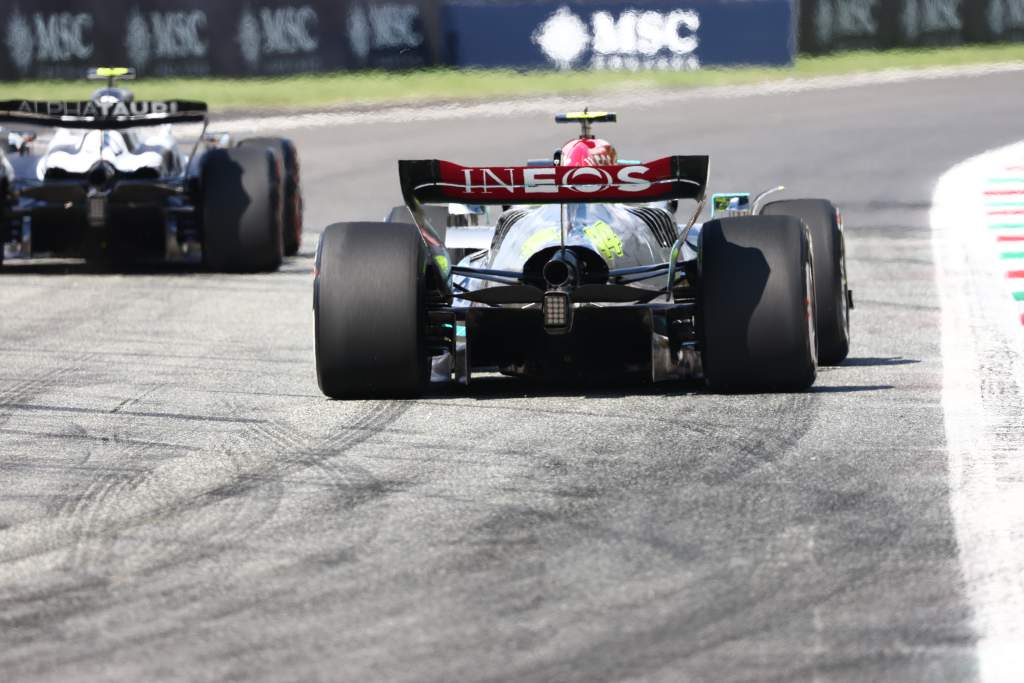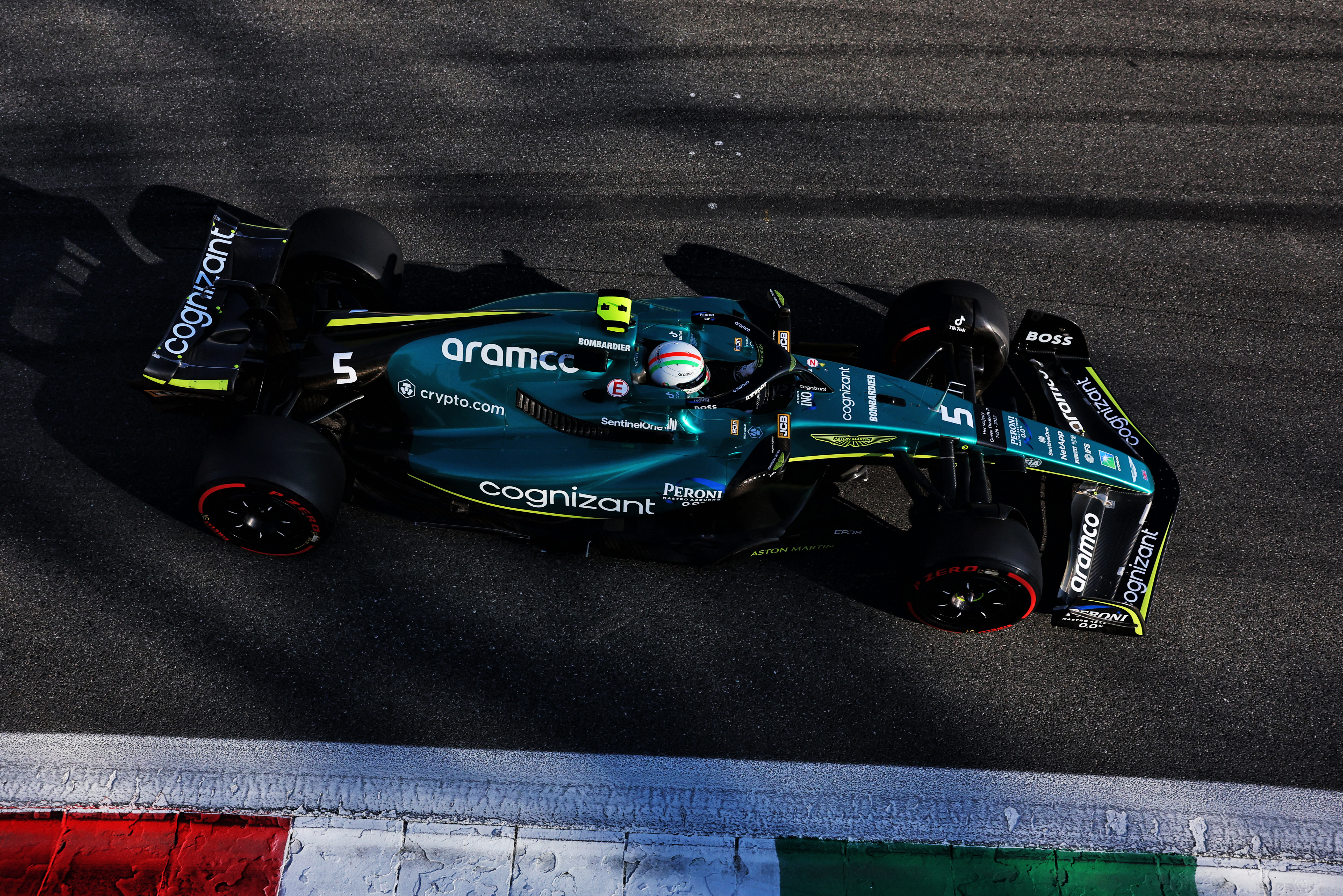Up Next

Monza is known as ‘the temple of speed’ for a good reason. It’s the lowest downforce track of the Formula 1 season but it’s not that teams don’t want the car to have downforce, it’s low drag that is the key. Unfortunately, the two go hand in hand – you have to sacrifice downforce to achieve low drag.
The tyres are the major drag components on these cars and in the past we have seen teams use different diameters and widths of tyres and rims for this style of track. But as they are now all using the same rim and tyre supplier, the rear wing is the most drag-inefficient component that is different from car to car and designed by the teams themselves.
The efficiency varies with the level of downforce but 3.5:1 is not a bad ratio. That means that for every kilo of drag you take off, you lose 3.5 kilos of downforce.

With the new aerodynamic regulations for 2022 and probably more importantly the budget cap, it has taken the teams quite a while to commit to their new family of different wing levels. Some, like Haas, haven’t deemed it worthwhile (with its relatively small budget in mind) to manufacture a new design of wing for this race, which is a bit of an outlier as there is only one track like Monza.
The central section of the upper wing, the central section of the beam wing and the diffuser all work hand in hand, so it’s important for the airflow in this area to not get separated.
Working as one, they are much more powerful than working individually and this is one of the reasons we see a lot more of the teams trimming off the rear wing’s trailing edge of the upper rear flap. To balance these rear load changes, they also either need to reduce the front wing angle or again trim the trailing edge of the front wing’s rear-most edge flap.
I am not a fan of trimming the trailing edge of the rear wing flap as you reduce its leverage. This is because it effectively becomes lower and further forward.
This trim will also move the centre of pressure on the underside of the wing itself just that small amount forward, again costing you leverage. Having the leverage and the centre of pressure of the wing itself as far back as possible improves the stability the driver feels under braking. Adding a small Gurney flap to the wing’s trailing edge also improves braking stability. After all, you put the wing up there at its maximum to get the most from it, so why reduce its effectiveness?
On the front, it’s a totally different story. The front wing is optimised to generate the best flow structure to the rest of the car that follows behind. Simply changing the angle will disrupt that flow and you will suffer consequences further downstream, so trimming the front wing’s rearmost flap’s trailing edge will, in most cases, be the best compromise to achieving a balance and doing least damage to how the rest of the car works aerodynamically.
A look through the cars at Monza in terms of front and rear wing combinations shows a fair few differences in how ‘swervy’ each teams’ wings are. But in the end, as an overall downforce producing component, most of this pales into insignificance. It’s important not to have abrupt changes in the loaded areas as this will lead to transverse flow, which can generate airflow separation.
Qualifying is important everywhere, even at Monza, eight of the last 10 grands prix have been won from the front row. However, with these new cars drivers are able to follow closer and for longer before they burn up the front tyres so straightline speed for the race has just become that bit more important.
To produce downforce there is no substitute for frontal area to reduce drag. You want exactly the opposite, and as we can see Aston Martin has gone to town in that area.

The Alpine has always been fast on the straight, as has the Williams, whereas the McLaren has struggled a bit so it will be interesting to see who out of that midfield bunch has hit the right combination. My bet is Alpine.
As for the big three – Red Bull, Ferrari and Mercedes – Red Bull has had good straightline speed all season, while Ferrari has normally gone for wing downforce, which has helped in qualifying but it has been vulnerable in the races.
Mercedes, like Ferrari, has usually gone for downforce and unlike Ferrari it has been able to turn that into reduced tyre degradation. But Monza is a different kettle of fish. In the race, straightline speed without the DRS is important and whatever benefit you can get from DRS won’t go amiss when and if you are in a position to use it.
Ferrari and Mercedes have gone for a straighter mainplane leading edge, whereas Red Bull looks like it is sticking with its ‘U’-shaped concept.
For the same level of downforce, the Red Bull concept with the DRS closed should be more efficient as the outer ends – which are very draggy – are minimised. The deeper mid-section should work the beam wing and diffuser more consistently, but when the DRS is open the Ferrari and Mercedes might just improve their top speed that little bit more.
The one thing with all these lower downforce rear wings is that the DRS will not be so powerful. If the wing is not generating the load then reducing it means that the reduction in drag will also be less
A good old-school tow will be much more important to lap time and also create the opportunity to overtake in the race, even though the slipstream effect is a little less powerful this year.






